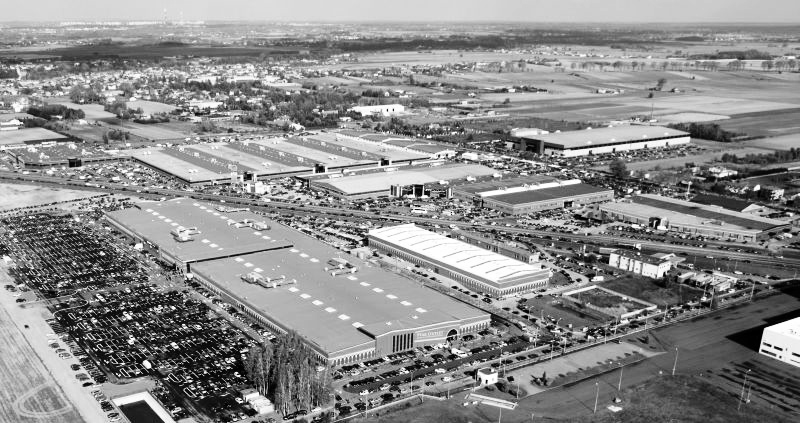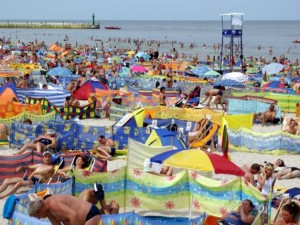Let’s Go To a Mall
The boom in the modern retail space development started in Poland in the 1990s. In Warsaw alone customers have currently access to 1.4 million square metres of retail space, while another 30,000 square metres are being developed.
At present the average retail space saturation in the Warsaw agglomeration amounts to 430 square metres per 1,000 inhabitants, which puts Warsaw in the lead among capital cities of the CEE region. Despite such significant availability of modern retail space, the Polish market still has a lot of catching up to do compared to West European countries.
In the 1990s Poland was one of the first countries to show a very rapid increase in new retail and shopping centres. This was mainly driven by the availability of attractive, well-situated, and, most importantly, adequately sized sites. The Polish market also owes its amazingly fast pace of development to a tremendous demand for genuine retail facilities. Because of the availability of sites as well as Poles’ purchasing power and their admiration for modern shopping centres in Western Europe, very soon Polish cities were awash with new, architecturally impressive, and ambitious retail centres. Two examples of early “proper” retail facilities are the Land Shopping Centre and the Panorama Shopping Centre in Warsaw, the opening of which was a significant event for almost all the residents of the capital. In West European cities the growth in new retail space was definitely more gradual due to the much lower availability of attractive sites and the different character of land development.

Złote Tarasy Retail Centre in Warsaw
The popularity of shopping centres in Poland can also be attributed to the weakness of large-city trade. Poland does not have the same shopping street tradition as countries in Western Europe, where every larger city has shopping streets, which do not only play the role of shopping and retail centres, but also have an appropriate and joint management system. In Poland the shopping street phenomenon is still in its infancy and the trend, which Western Europe encountered many years ago, is just starting to appear. Generally, Polish shopping streets are either non-existent or do not fulfil the usual parameters. The belief still remains that the potential of shopping streets will soon start to be appreciated.
The big difference between Polish and foreign shopping centres is the tenant mix. Management of Polish shopping centres face a significant challenge of diversifying the retail offer in their facilities. Unfortunately, Polish brands, especially from the fashion sector, have a very similar offer, while many foreign chains, even if they decide to show themselves in Poland, are only available in top class shopping centres and always start their expansion with launching a pilot store in the capital. Moreover, in recent times Poles’ special liking for discounters has emerged. New outlets of Biedronka, Lidl, Pepco, and KiK have been springing up like mushrooms. According to market analysts Poland faces the risk of the “discountisation” of shopping centres, because discounters are not situated on the outskirts like in Western Europe, but are more and more frequently regular tenants in Polish retail centres.
In the near future the Polish shopping centre market will be ripe for modernisation and recommercialisation. Most Polish retail facilities require reconstruction, extension, and a change in the tenant mix. The last has been already spotted, as an opportunity to remain on the market, by investors and companies managing retail facilities. The rules for acquiring new tenants are changing in order to diversify the offer. The future of retail centres may also lie in, among other things, widening their functionalities. Retail centres should become a place, which does not only satisfy shopping needs, but also serves many other purposes. In Poland this trend is starting to appear with polish retail centres more and more frequently offering the services of beautician’s salons, post-offices, gyms, or spa salons. Investors can also see an opportunity in profiled retail centres. Some retail facilities are changing their functions to become retail, entertainment, and family centres, while others want to attract more affluent customers with premium brands and medical facilities.
Tenants of Polish shopping centres must also do their homework. Customers more and more frequently seek non-mainstream offers, while brand positioning is still a big challenge for Polish producers – their products usually differ just in price. However, the appearance of boutiques offering the creations of Polish designers looks promising. The phenomenon of so-called pop-up stores, which are open “for trial” and are test stores, has become widespread. They can become places, where Polish customers will be able to get access to up to minute fashion offers.
Inquiry Market Research conducts research projects for shopping centres, retail chains and manufacturers in Poland and across Eastern European markets.





